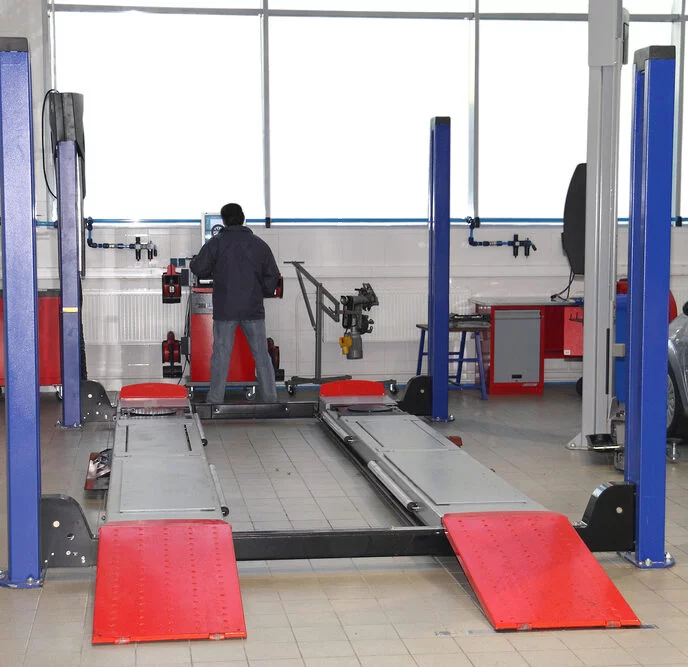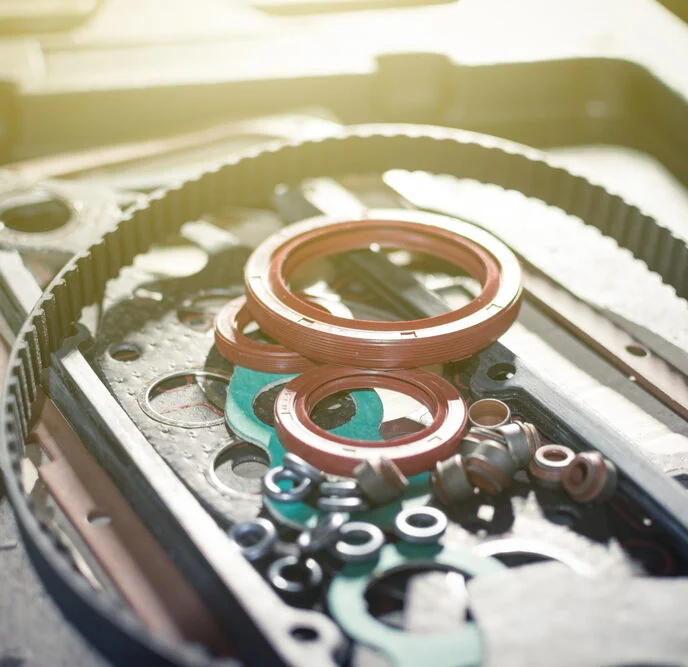What Size Car Lift Do You Need?

A car lift can be a big investment for hobbyists and businesses alike. Because of this, you want to make sure you get the right lift for your needs. There are a few things to consider when buying a lift, but few are as important as buying the correct size. The right “size” can mean multiple things. When considering what size car lift you need, you’ll need to consider if the lift will fit in your space and if it can support the weight of the type of vehicles you want to work on. Regardless of whether you’re in a home garage or a professional shop, these are a few things you will need to think about when determining what size lift you will need.
No one should purchase a car lift on impulse. By setting your goals and thoroughly measuring your space, you can establish what kind of car lift will best suit your needs. Once you ask yourself why you’re buying a car lift in the first place, you’ll be able to start answering the question: what size car lift do you need?
Determine Why You Are Purchasing a Car Lift
The first step is to determine why you’re purchasing a car lift in the first place. Are you looking to work on cars out of your garage or at an automotive shop? Whatever your reason, it is important to realize what types of vehicles you’ll be working on since a pick-up truck and a common compact car may require different car lifts.
Once you’ve decided what lift to purchase based on the vehicles you’ll be working on, it’s time to see which lift can accomplish your goals. To figure out which lift size you’ll need, you will have to calculate your ceiling height, floor space, and workspace for different-sized vehicles.
Figure Out Your Ceiling Height
Unlike car jacks, lifts will need plenty of vertical space to work with them. To figure out what type of car lift you can use, you will first need to determine your ceiling height. Typically, you will need at least a minimum of 11 or 12 feet, plus additional clearance for hazards and lights. Unfortunately, if you have low ceilings, your options are going to be limited. However, if your ceiling is higher than the minimum, then your options are essentially endless!
Since certain lifts are necessary to work on specific types of vehicles, your ceiling may make the choice of what vehicles you will be able to work on for you. If the height isn’t an issue, the next thing to consider is the amount of space you have in your garage or shop.
Calculate How Much Floor Space You Have
Assuming you’re not limited on height, start calculating how much floor space you have available to you before you make a purchase. To determine your amount of floor space, you will need to be realistic about the amount of open space, not just the overall square footage. Factor in any additional equipment that cannot be moved and deduct that from the total room size. Also, make sure to account for anything that might need to be moved to accommodate space for the car lift.
No matter what lift you purchase, you’ll want to make sure it can be installed properly. That’s why it’s important to make sure you measure the space you have available accurately, and as many times as necessary to avoid purchasing a lift that simply won’t fit. Once you’ve nailed down the amount of space you must work with, the last thing to do is to pick a lift based on the vehicles you want to work on, and what lifts can handle them.
Determining the Vehicles You Want to Lift
When you first decided to purchase a car lift, you likely had a certain vehicle in mind. Whether it was a truck or a compact car, you should now have a better impression of your options based on your available ceiling height and floor space. Different vehicles will work best on certain types of lifts based on the vehicle build and weight. On most vehicles, you can find a sticker located on the door jam to figure out how much a vehicle weighs and how the weight is distributed throughout. It’s also important to factor in some extra weight for vehicles that have extra attachments to the vehicle that could add on extra weight.
It is recommended you purchase a lift that can handle even heavier weight than your intended vehicle size to give yourself some wiggle room. If space is no longer a concern, this is the best option to consider when determining what size of car lift to purchase.
Ultimately, when purchasing a car lift, you want to get a slightly bigger lift than you will need. You want to rest easy knowing your car lift will be able to perform in the workspace you have available and be able to lift the weight of the vehicles you want to work on. The only thing left to do is to buy the lift!
Find the Right Lift for You Operation with SVI International
Whether you decide on an automotive scissor lift, a four-post lift, or any other lift model, it’s imperative that you purchase your lift and lift replacement parts from a highly reputable company. At SVI International, we are the industry’s leading supplier of auto lifts and lift repair parts for all types of automotive lifts.
With over 40,000 products, our diverse product line serves as a one-stop-shop for equipment parts, lifting equipment, fluid delivery products, RELS brake lathes, and so much more.
We know that downtime can be costly, so our 3 ready-ship warehouses provide on-time delivery and same-day shipping for in-stock parts.
An SVI specialist would love to get in touch about serving your needs, including any questions or concerns you may have. To get in touch, give us a call at (800) 321-8173 or complete our online contact form. We always respond quickly!


